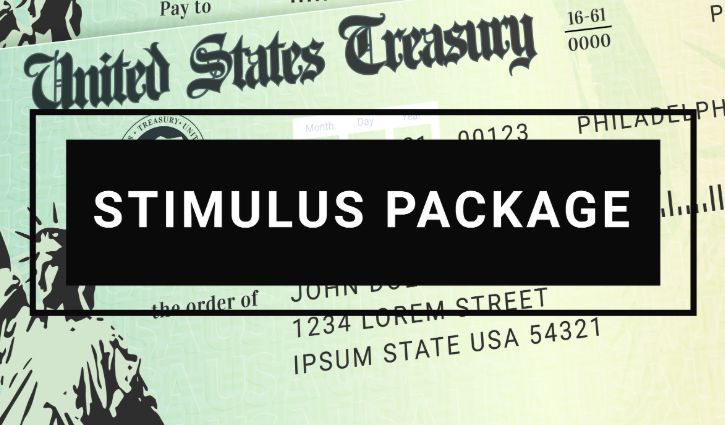On Monday, Dec. 21, 2020, Congress passed an emergency stimulus package designed to deliver approximately $900 billion in COVID-19-related aid. On Sunday, Dec. 27, 2020, President Donald Trump signed the bill into law. The bill was part of a $1.4 trillion spending package that will keep the government open for the fiscal year.
Notably, the bill provides funding for unemployment benefits, small businesses, direct economic payments to individuals, vaccine distribution and rental assistance. This article provides an overview of what is included within the emergency relief bill.
UNEMPLOYMENT BENEFITS FUNDING AND EXTENSION
The bill includes funding for unemployment benefits for out-of-work Americans. Specifically, this bill allows unemployed Americans to receive $300 per week in federal funding in addition to the existing unemployment aid they may be collecting from their state, if those state-level benefits have not already run out. The additional unemployment benefits and extensions included within this bill would provide aid for 11 weeks from their expiration at the end of December 2020 through at least March 14, 2021.
Initial COVID-19 relief for unemployment benefits was introduced by the Coronavirus Aid, Relief, and Economic Security (CARES) Act, which was enacted on March 27, 2020. The CARES Act provided funding for states to waive any waiting week requirements for unemployment income (UI) benefits during the COVID-19 pandemic and to provide an additional $600 per week to all individuals receiving UI benefits for weeks of unemployment ending before July 31, 2020. President Trump signed a memorandum to extend a portion of unemployment wages after the initial $600 per week expired.
Additionally, the bill includes an extension of Pandemic Unemployment Assistance (PUA). PUA is a program that allows workers who are not traditionally eligible to receive unemployment benefits, including self-employed and gig workers, to do so. An 11-week extension in base benefits through this program is also included within the bill.
AID FOR BUSINESSES
The bill includes approximately $325 billion in funding to the Small Business Administration (SBA) to assist U.S. businesses that have been affected by the COVID-19 pandemic.
Specifically, the bill allocates $284 billion in funding to replenish the Paycheck Protection Program (PPP), which provides forgivable small business loans to eligible applicants. Under the bill, certain firms that had already applied for, received and exhausted PPP funds will be eligible to apply for another PPP loan. To be eligible for a second PPP loan, a small business must have less than 300 employees and have sustained at least a 30% loss in revenue during any quarter of 2020. Additionally, small 501(c)(6) organizations with 150 or fewer employees that are not lobbying organizations would be eligible for a PPP loan with this round of funding.
[display_mode mode=”non-member-only”]Members login to access full article[/display_mode]
[display_mode mode=”member-only”] The bill also provides the following with regard to the PPP:
- Expansion of expenses eligible for loan forgiveness to include supplier costs and investment costs related to modifying facilities and obtaining personal protective equipment for safety
- Simplified loan forgiveness process for businesses that have borrowed $150,000 or less in PPP loans
- Confirmation that business expenses paid for with PPP loan funds are tax deductible
Businesses interested in applying for a PPP loan should contact their lender for more information.
The bill also directs $15 billion in funding for independent live-venue operators affected by COVID-19 and another $20 billion for small business grants.
DIRECT ECONOMIC IMPACT PAYMENTS
The bill includes another round of economic impact payments—commonly referred to as stimulus checks. The CARES Act provided the first round of stimulus checks for eligible Americans. Under the CARES Act, tax filers with an adjusted gross income of up to $75,000 for individuals and up to $150,000 for married couples filing joint returns were eligible to receive the full payment of $1,200 per individual or $2,400 per married couple. Parents were also eligible to receive $500 for each qualifying child.
The bill follows the same eligibility guidelines as the CARES Act, but the amount of the stimulus check is less this time around. Instead of being eligible for a $1,200 payment, qualifying taxpayers are eligible for a payment of $600 per individual or $1,200 per married couple. Parents will also be eligible to receive $600 for each qualifying child.
OTHER PROVISIONS INCLUDED IN THE BILL
The bipartisan bill provides funding for a variety of other issues, including:
- U.S. Postal Service—$10 billion
- Health Care Provider Relief Fund—$35 billion
- COVID-19 Testing and Tracing and Vaccine Distribution—$69 billion
- Transportation Industry Relief (Airlines, Airports, Buses, Transit and Amtrak)—$45 billion
- Education—$82 billion
- Housing Assistance (Rental)—$25 billion
- Additionally, the bill extends the federal moratorium on evictions until the end of January 2021.
Another provision included in the bill is a ban on surprise medical bills—to help protect insured patients from large medical bills when they unknowingly receive out-of-network care. The bill also includes enhanced tax credits, including the employee retention tax credit for employers that keep employees on payroll and provide paid sick leave. Under the bill, the earned income tax credit and child tax credit would become available to those who lost wages or their jobs during the COVID-19 pandemic, and expand the low-income housing tax credit.
Click here to view the full text and see what else is included within the bill.
WHAT’S NOT INCLUDED IN THIS BILL
Although providing direct aid to state, local and tribal governments and establishing an employer liability shield were included in early drafts of the bill, the two provisions were not included in the final text.
These provisions were intensely negotiated by both parties and were the main cause of the stalled negotiations, but were ultimately dropped in order to pass the bill in a timely manner.
While the bill doesn’t provide direct aid to state, local and tribal governments, it does extend the deadline for states and cities to use unspent money provided by the CARES Act. Under the CARES Act, states and cities had until the end of 2020 to spend their funds, and any unspent amount would have to be returned to the Department of Treasury. This bill extends the original CARES Act deadline for a full year.
Lastly, the Families First Coronavirus Response Act (FFCRA) was not explicitly extended by the bill, and so employers are no longer required to provide federal FFCRA leave past Dec. 31, 2020. There is, as alluded to earlier, a provision in the bill that pertains to FFCRA which provides that employers who voluntarily choose to continue to provide leave in line with FFCRA terms can continue to receive a federal tax credit for leave through March 31, 2021.
Employers should keep in mind that some states and local jurisdictions have passed their own FFCRA-like laws that extend beyond Dec. 31, 2020, and others that were set to end Dec. 31 may be extended well into 2021.
WHAT’S NEXT?
The bill has been signed into law. We will continue to monitor developments and provide updates as necessary.
Download PDF [/display_mode]












